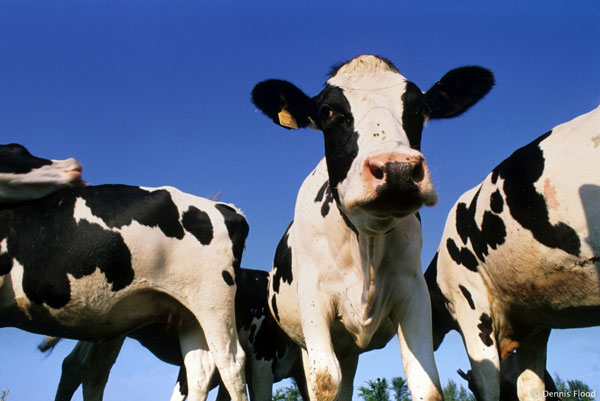Measure cow's emissions to combat climate change
The British government is asking scientists to measure the amount of methane released by the cattle herd in this country, to serve as an effort to reduce the impact of livestock on climate change.
Agricultural production contributes about 8% of the total greenhouse gas emissions in the UK. The methane emitted by cows and other livestock accounts for a large proportion of the total emissions from agricultural activities.
However, no one knows exactly what percentage of methane livestock contributes because so far no way has been found to measure the amount of gas released by animals. In order to reduce the negative impact of livestock on the environment, farmers must know the volume of emissions that each cow breed emits each day along with the factors that can increase or decrease that gas.

To reduce the impact of cattle on the environment, farmers must know the amount of emissions they have
objects emitted every day.But people have yet to find a way to accurately measure cow emissions.
The UK government has pledged to reduce greenhouse gas emissions by 34% by 2020 compared to 1990. The European Union has discussed the possibility of introducing methane into emissions trading programs. But to accomplish those goals, scientists need to rely on a measure of livestock emissions.
So the British government asked a group of measurement experts from Teddington's National Physical Laboratory to study a reliable measure of the amount of methane the cow emits during the day. Their work is part of a £ 12.6 million research project to understand the impact of agricultural activities on climate change.
To measure emissions in industrial production, a device is put into the chimney to sample the gas in it and then take the sample to a mobile laboratory. But this technique cannot be applied to a herd of cows moving continuously in the field. Instead, experts plan to measure the amount of gas in a laser field to find the amount of gas that each breed emits to the environment over a certain period of time (like an hour or a day).
"We use lasers to interact with the gases in the field. The way to absorb lasers will help us determine the name, volume, direction and speed of each gas , " Alan Brewin, Project director of cattle emissions measurement, explained.
- Collect emissions from cows
- What is Climate Change?
- Cows also cause a greenhouse effect
- The world maintains 'weapons' against climate change
- Marching for climate change around the world
- Opening conference on global climate change in Paris
- 4 shocking findings on climate change
- Measurement of methane emitted from cows
- The amount of CO2 will reach a record in the future
- The tragedy of climate change
- EU reduced 40% of greenhouse gas emissions by 2030
- Climate change affects 10% of the world population
 Is the magnetic North Pole shift dangerous to humanity?
Is the magnetic North Pole shift dangerous to humanity? Washington legalizes the recycling of human bodies into fertilizer
Washington legalizes the recycling of human bodies into fertilizer Lightning stone - the mysterious guest
Lightning stone - the mysterious guest Stunned by the mysterious sunset, strange appearance
Stunned by the mysterious sunset, strange appearance